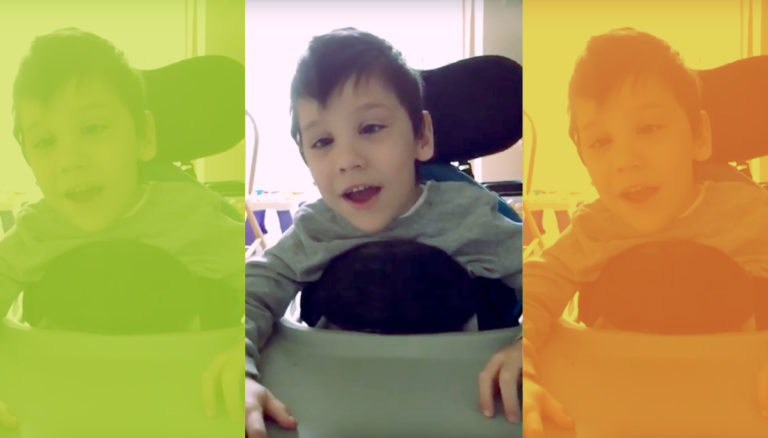Feedback and Its Impact on Behavior, Learning, Development, and More – Part 3
by Bob Doman
You say nice things –I like you!
You’re fun to be around!
You think I’m good-you like me!
I’ll be good for you and try hard!
You just say ugly things to me!
You think I’m bad and dumb—then I’ll be bad and dumb!
 Simple statements: The more positive you are with a child, the more they will like you, respect you, and work to please you, because they will feel better about themselves when they are with you. What we and others say to them forms their self image. We tell them who they are.
Simple statements: The more positive you are with a child, the more they will like you, respect you, and work to please you, because they will feel better about themselves when they are with you. What we and others say to them forms their self image. We tell them who they are.
Good quality positive feedback develops positive attitudes, good self-image, and it motivates. Providing quality feedback is not necessarily easy nor does it come naturally to many of us. Please see my article Feedback Part 1 to get a better picture of what good quality feedback needs to be.
The more problems and issues a child has, the fewer obvious opportunities there may be to give them positive feedback; but the more problems and issues they have, the more they need positive feedback.
Most children who are high functioning and doing well receive lots of positive feedback. Every good grade on a test provides positive feedback; if they made a basket or scored a goal, they receive positive feedback; if they look nice, they receive positive feedback; if they have friends, they receive positive feedback. High functioning children tend to do well socially and have friends and positive social relationships—all things that provide positive feedback and, in turn, motivate and encourage the child to try more and do more. If you do a lot of things well, you receive a lot of positive feedback, generally feel pretty good about yourself, and on the occasion when you receive criticism, you accept it, learn from it, and are better for it.
Children who do not do well academically or in sports or socially tend to receive very little positive feedback. Their life is often filled with poor grades and failures in many, if not most, of the things they do. On the occasion when they receive positive feedback, they don’t believe it; and when they receive negative feedback/attention, it’s an affirmation that they are “dumb” or “bad” or whatever.
The children who receive the least positive feedback are the ones who need it the most.
Who children think they are is primarily a reflection of the feedback they receive. The feedback they receive determines how they define themselves.
Giving children real, true, and positive feedback is imperative.
One very important way to help every child is to create a positive environment for them. A positive environment helps motivate them, helps them develop a positive self-image, and it provides you the parent, caregiver, coach, or teacher with power to influence them in a positive way.
I define a positive environment as one that has a ratio of four positives to every one negative. The ratio of 4:1 is strong enough on the positive side to provide all the benefits of a positive environment, but also provides the opportunity for constructive criticism or feedback to extinguish unwanted behaviors and make corrections.
Think of a common scenario involving a child with a developmental, learning, or behavior problem or combination of all three. Typically such a child may live in a world where they receive only one positive to every four negatives. The sad reality is that for many such children that ratio is 1:10 or more, much more. Imagine their life–they are doing math and they hear, “That one is wrong. So is this one and that one and…”
When they are reading, for every word missed they hear, “Wrong!” and every word read correctly gets ignored. They play appropriately by themselves and get ignored. Then they poke their sister, who squeals, and they get a quick sharp, intense response from Mom. This is their day. Do something right—minimal or no feedback; do something wrong, and you are “bad” and “dumb” at math, reading, and even playing, or simply just “bad” and ”dumb.”
When balanced, negative comments and reactions generally have a significantly stronger impact on us than do most positives. Also, most negative responses are delivered with greater intensity than positives, thus the need for the ratio of 4:1 positives to negatives to create a good positive environment.
Parents, caregivers, and teachers need to learn how to find the opportunities for positive feedback. Mark and comment on everything that is right; don’t emphasize what is wrong, comment and emphasize what is right. Take note of those things that are wrong and come back and teach them. For children with behavior issues, catch them being good and let them know it. Perceive the struggling child as a child with the potential to do well, and work to help them develop that new perception.
We change the brain through the neuroplasticity fundamentals of frequency, intensity, and duration. It’s important to understand that neuroplasticity is how the brain changes and develops. Consistent positive input/feedback helps produce positive outcomes–motivation, good intentions, good self-image, and happy children. Consistent negative input/feedback creates negative self-image, poor attitudes, and unhappy children and helps produce negative outcomes. Negatives impact the brain, and if delivered with sufficient frequency, intensity, and duration, we do change the brain, building negative perceptions and making the brain more receptive to interpreting even positive comments as negatives.
Creating a positive world for your child goes a long way toward gaining their attention and cooperation and toward developing the strengths and abilities that you want to foster.
Your goal: four positives to every negative.





